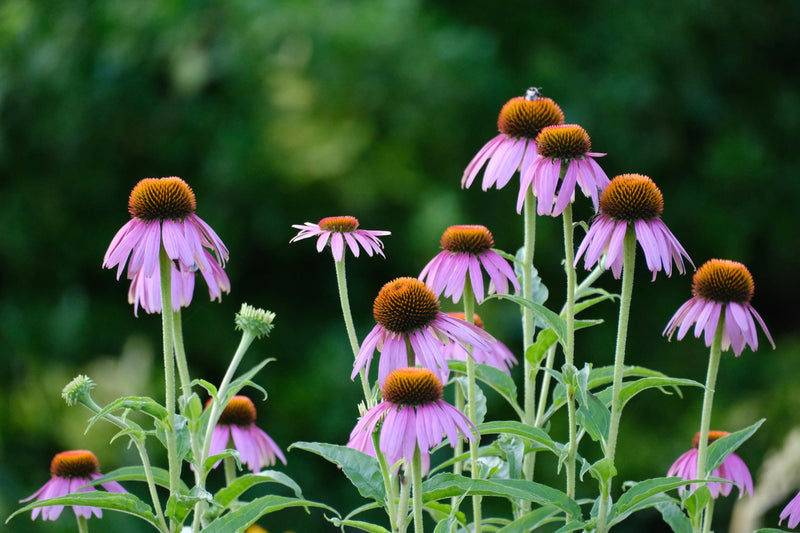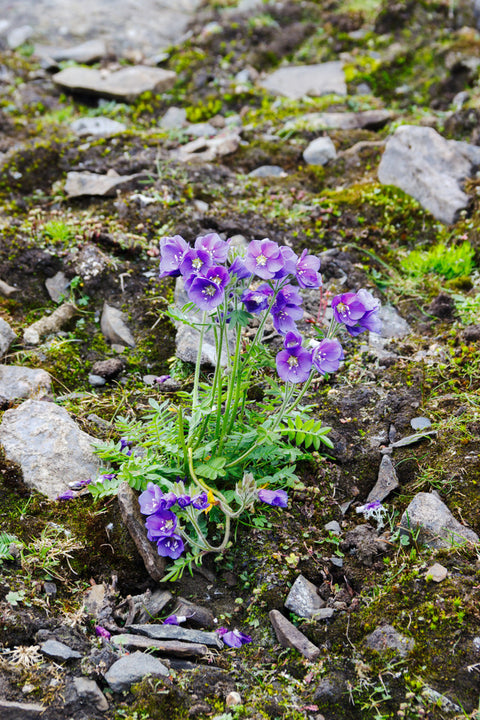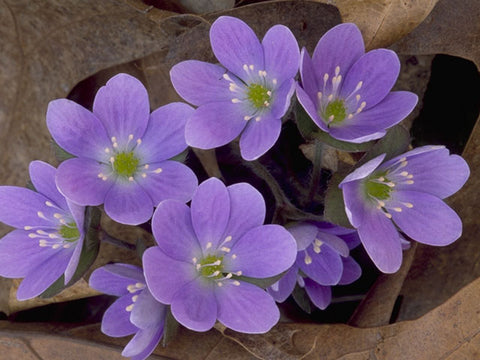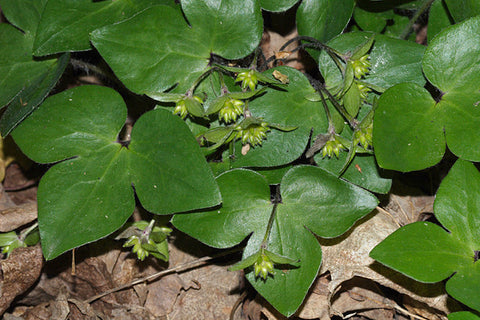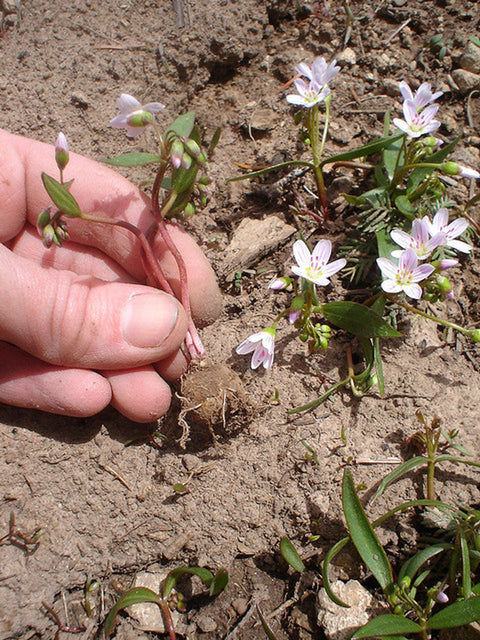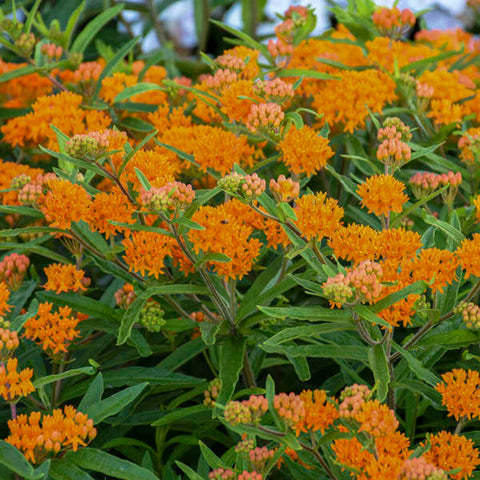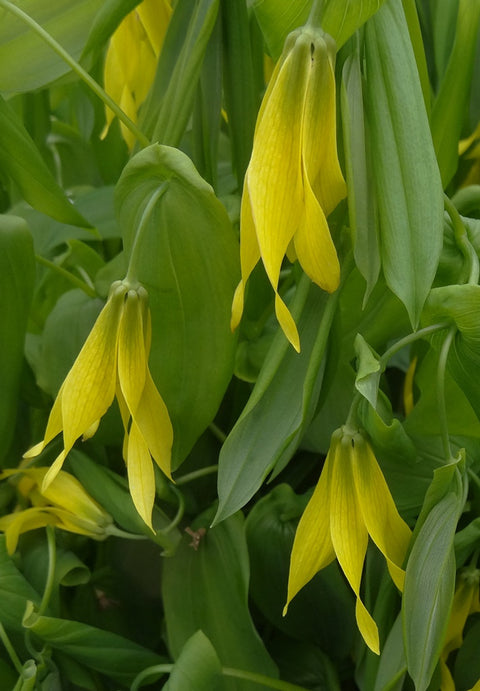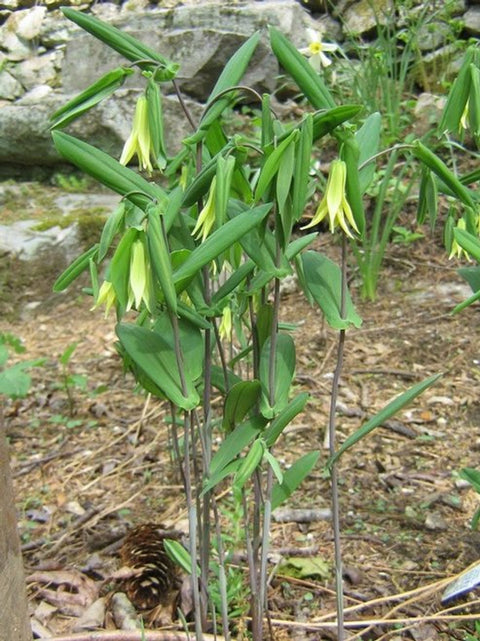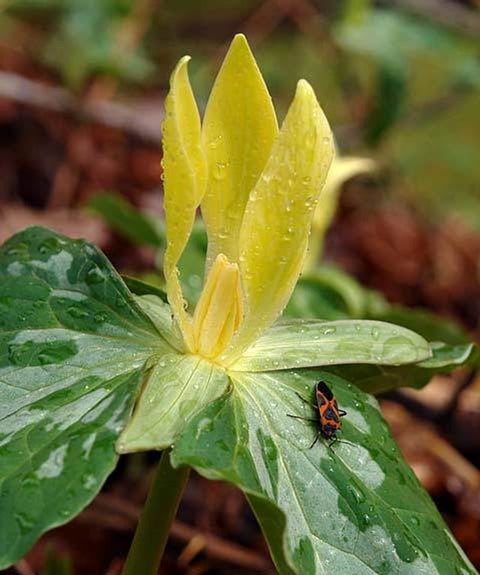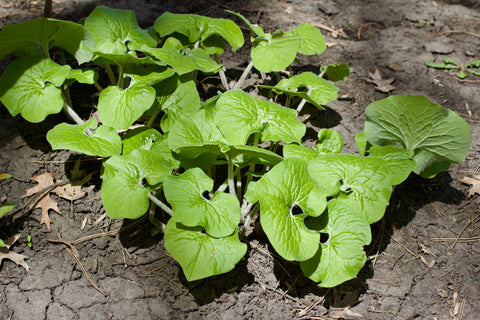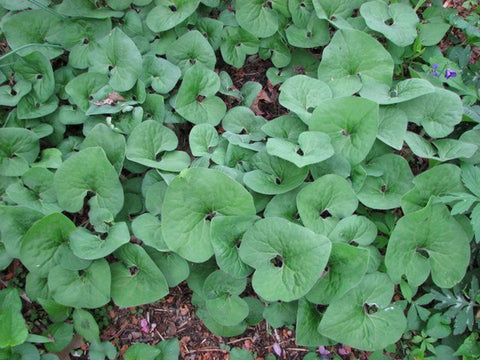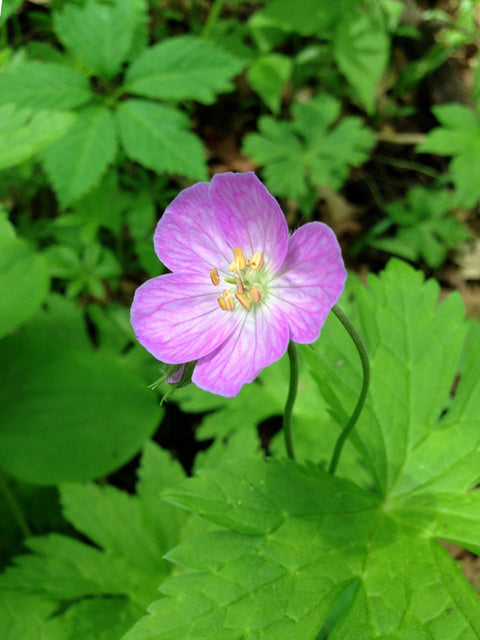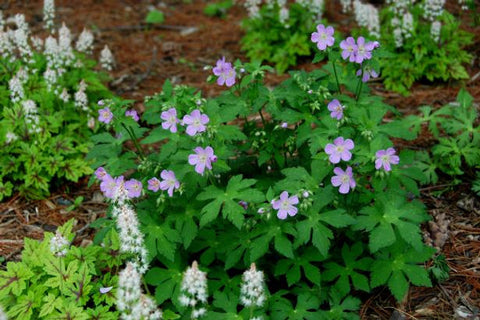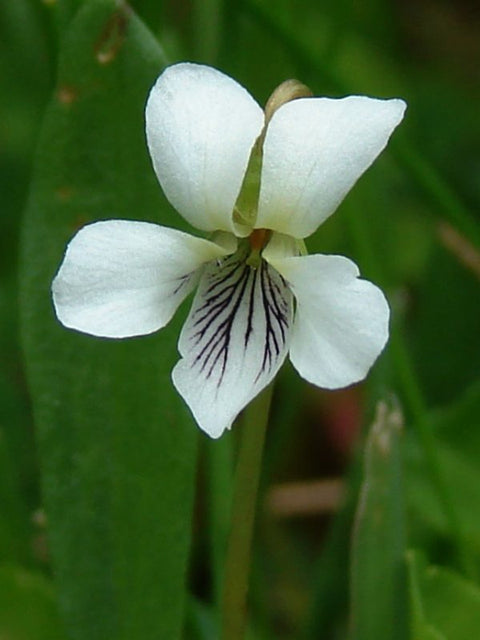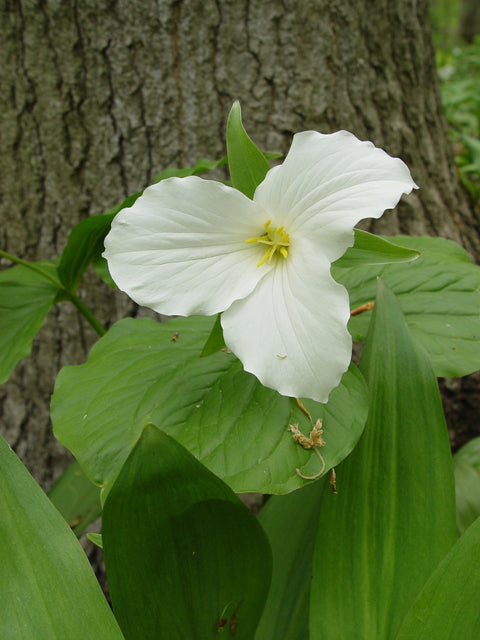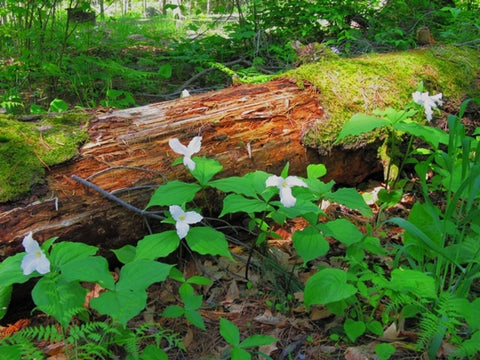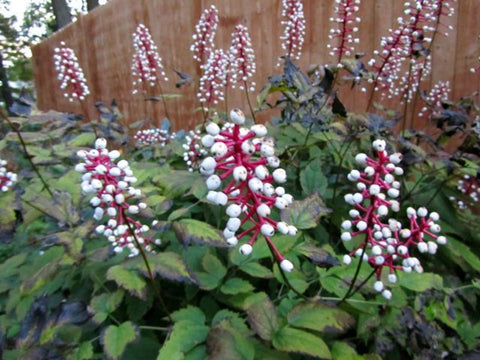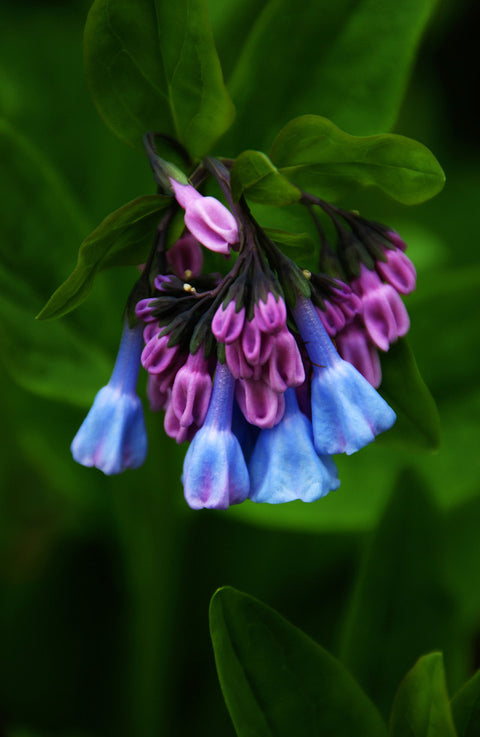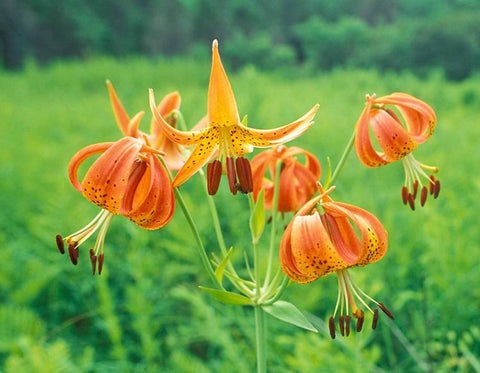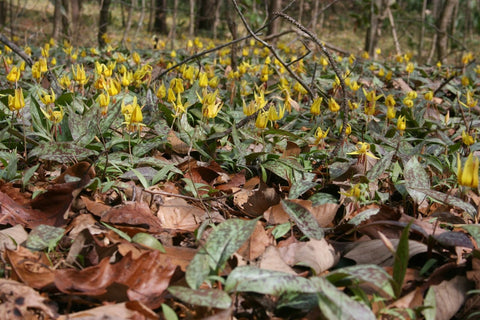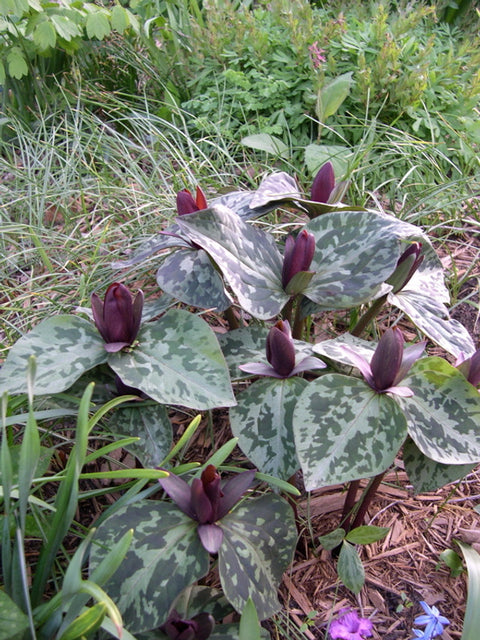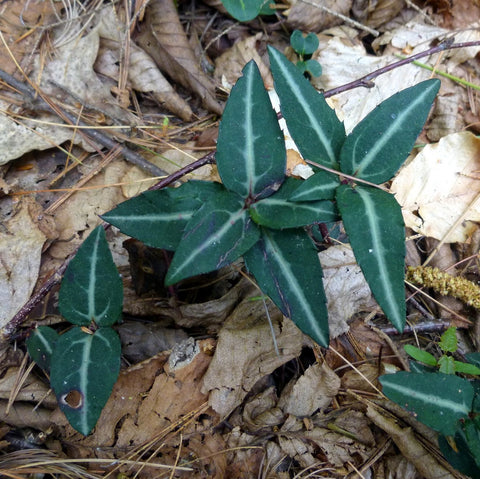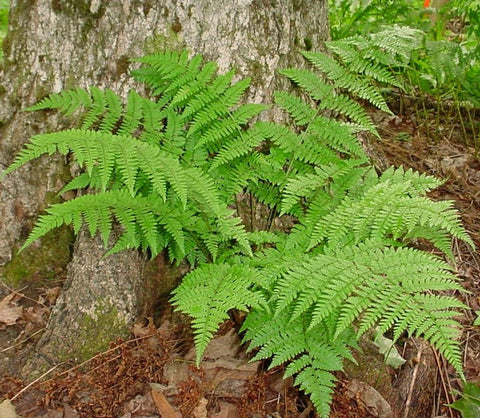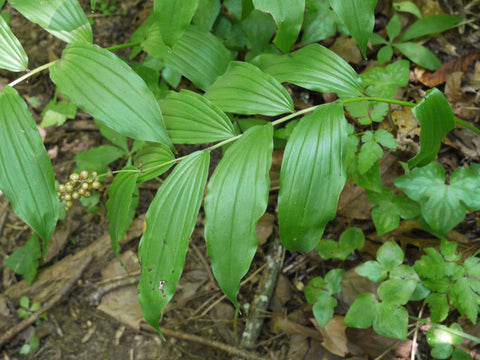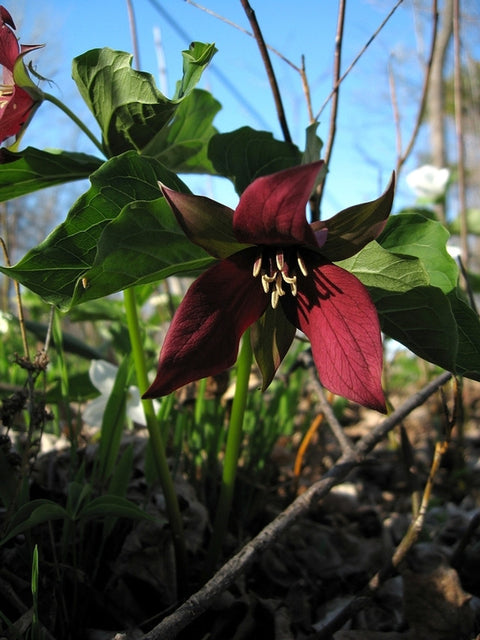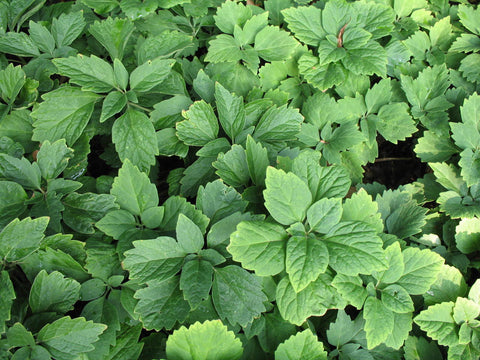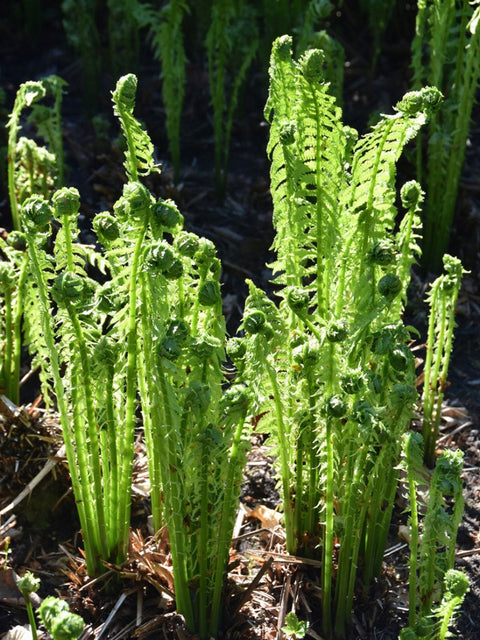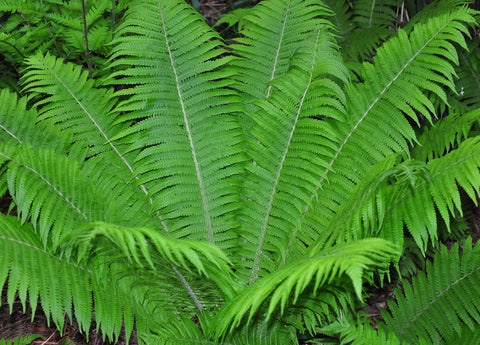Bestsellers
Best selling native plants
Gardeners often face the choice of which plants to include in their landscapes. When it comes to native plants vs non-native, it is often clear that native species hold an advantage. Native plants are well-adapted to the climate, soil, and wildlife of the area. They require less maintenance, attract local birds and pollinators, and support biodiversity. More and more people are choosing to work with the local ecology by choosing native plants. Virginia Bluebells, White Trillium, Christmas Fern, Trout Lily, and Yellow Trillium are some of the best selling native plants on the market.
Virginia Bluebell is a beautiful spring-blooming perennial with delicate, bell-shaped flowers. The soft blue flowers attract pollinators like bees and butterflies, and they pair nicely with other woodland wildflowers. Virginia Bluebells are shade-tolerant and a perfect addition to shaded gardens or partial shade locations. This native wildflower is low-maintenance and only requires well-drained soil and a cool, moist climate.
White Trillium is another native plant that is in high demand at nurseries and garden centers. White Trillium has large, white flowers that slowly turn pink as they age. These plants are native to woodlands and forested areas, so they are perfect for shaded gardens or woodland settings. The large, three-petaled flowers have a very calming and serene quality. They are also a slow-growing perennial, making them an excellent long-term investment for any garden.
Christmas Fern is a best selling evergreen fern that stays green all year, even during winter. This fern is native to the eastern US and can be used in woodland gardens or as a border for shaded areas. Christmas Fern is low-maintenance and can tolerate a variety of soil types and moisture levels. It is also resistant to many common pests and diseases, making it an easy-care plant for gardeners.
Trout Lily is a small wildflower native to the eastern United States. The common name comes from the mottled leaves that resemble the skin of a trout. Trout Lily has delicate yellow flowers that bloom in early spring, usually in groups or clusters. These flowers attract pollinators like bees. Trout Lily plants prefer rich, moist soils and are often found growing near streams or in deciduous forests. They can take a while to establish but will naturalize and spread once they are settled.
Yellow Trillium is a native plant with yellow blooms related to the White Trillium. It is another excellent choice for woodland gardens or shaded areas of the yard. This plant is also long-lived, so it is a great addition to any garden. Yellow Trilliums require moist, well-drained soils but are otherwise low-maintenance.
Native plants are better for the environment and wildlife in your area than non-native species. Native plants are more resistant to pests, diseases, and drought. Their deep root systems help improve soil health and water retention, while their flowers provide food for local pollinators. Native plants also help conserve water and fertilizer, making them a more sustainable choice for the eco-conscious gardener. Choosing native plants for your garden helps create a beautiful space that is in harmony with the local ecosystem.
Incorporating these best selling native plants into your garden will allow you to get the most out of your plants and create a sustainable and environmentally friendly space. Native plants are easier to care for, support local ecosystems, and help reduce maintenance needs. Native species have been growing in your area for years and are more resistant to pests, diseases, and weather conditions than non-native plants. By choosing native plants for your garden, you can help support local wildlife and create a beautiful, low-maintenance landscape.
